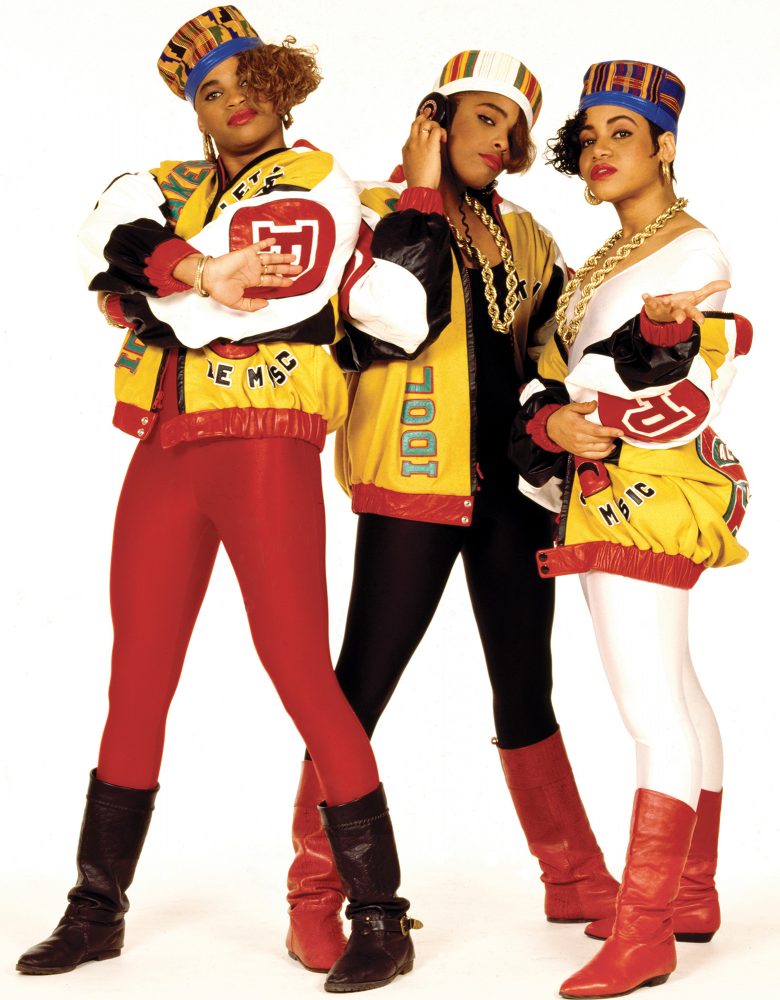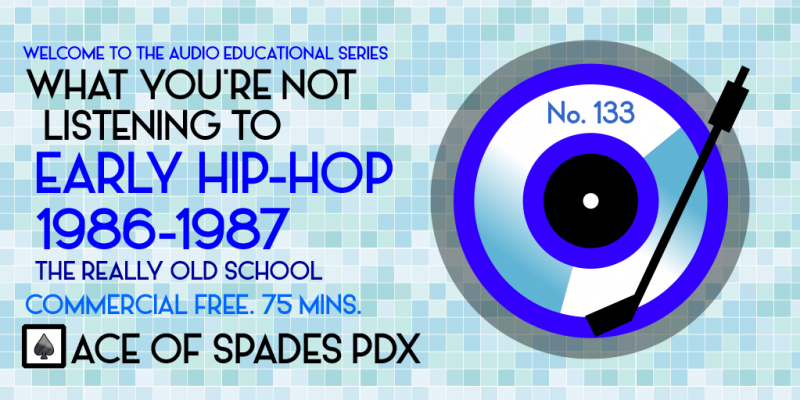Podcast: Play in new window | Download | Embed
Nineteen Eighty-Six was the year mainstream America could no longer ignore Hip-Hop. It exploded nationally in the middle part of the year and then did something that took it even further: white kids from the suburbs became fascinated with it in a major way. This was also the era where Hip-Hop sub-genres, such as New Jack Swing and Hip-Hop Soul, were hitting the Pop charts regularly, along with female rappers and dance remixes further pushing it everywhere. #hiphop #rap #hiphipsoul #newjackswing #oldschool
WARNING: This program contains language and subject matter some may find objectionable. There are also no ballads in this program. Repeat, no ballads.
Welcome to what is considered by many to be the first two true full calendar years of The Golden Age of Hip-Hop.
Musically, the mainstream Pop singles and album charts will still filled by mega-stars like Prince and Madonna, but two new music movements that started their ascent in the late 1970’s were slowly taking over in a way no one expected. The first was Heavy Metal, and the other was Hip-Hop.

What made things even more exciting: these two very distinctive music styles were merging at times to create whole new hybrids, which, believe it or not, were actually much more similar sonically and lyrically than appeared on the surface. Metal was the sound of white kids in the suburbs, where the music industry made most of its money. When Rap and Hip-Hop were introduced to heavy rock and metal through Run DMC’s collaboration with the veteran act Aerosmith, whom, by the way, had not had commercial success in over eight years, the kids responded overwhelmingly, much to the dismay of their parents.

Instead of just one thing parents hated about their kid’s music, now there were two. Additionally, young white girls also latched onto some of the new Hip-Hop artists as well, particularly the Beastie Boys, whose debut LP became the very first Hip-Hop #1 charting Billboard 200 LP in history.

And of course, MTV, which, believe this or not children of the revolution, actually once stood for “Music Television” and played videos all day, gave the kids what they wanted; all of a sudden, images of strong, Black men and women were now front and center on the boob tube in John and Martha’s living room, playing in Peoria.

Hip-Hop Soul was becoming more distinct from it’s cousin, New Jack Swing, the latter a type of Hip-Hop dance music that benefitted greatly from the standby Roland TR-808 drum machine but now with completely affordable samplers, such as the E-MU SP-1200. (James Brown’s long, varied and vast catalogue, as well as his importance to all Black music, made him the most sampled artist.) New Jack Swing also upped the tempo and created beats no human could actually create, including tambourine triplets at 120 BPM or faster that sounded like a slithering metal snake.

Also during this time, answer/dis/challenge records started to come of of every corner there were Black, urban audiences, thanks to the national recognition that Hip-Hop was getting from its original New York City origins, in places such as in Los Angeles and Miami. The Big Apple was still the center of the Hip-Hop universe during this period, but the winds were starting to shift elsewhere as well.
One thing that was coming to the fore: more explicit language and graphic subject matter, which not only caused the beginnings of a great divide at the time in Hip-Hop, but also illustrated how vast its scope was in comparison to just a few years prior.

Lastly, in an era where there seemed to be so many landmark recordings and scenes within scenes, the prominence of the female rapper came to the fore with two friends who met in college as student nurses and worked part-time at Sears: Salt-N-Pepa, replete with their own female DJ, Spinderella. Before the end of the decade, female rappers were being signed by labels at a pace that would have given you whiplash.

Sally Ride, the first female U.S. astronaut into space and a Mission Specialist of many Space Shuttle journeys during the 1980’s, said the following: “You can’t be what you can’t see.” In 1986 and 1987, everyone saw the future, and Hip-Hop would became a major part of it for decades.

I am told by those far better in the know, knowledge and understanding and respect for Hip Hop and its roots are vital. This is the fourth part in a series of shows that focus on some fan favorites and key tracks in Hip-Hop’s first decade.
First Part
- Push It (radio edit), 1987, Salt-N-Pepa, 7″ inch single A-side, originally the B-side to the 12″ single “Tramp”, and eventually released on version two of Hot, Cool & Vicious
- Cinderfella Dana Dane (album version), 1987, Dana Dane, Dana Dane With Fame
- Paid In Full (Seven Minutes of Madness), 1987, Eric B. & Rakim, 12″ single A-side
- Go Stetsa I, 1986, Stetasonic, On Fire
- (You Gotta) Fight for Your Right (To Party!), 1986, Beastie Boys, Licensed To Ill
- I Want Her (radio edit), 1987, Keith Sweat, 7″ A-side single, original version on Make It Last Forever
Second Part
- The Brige, 1986, MC Shan, 12″ single A-side
- South Bronx, 1986, Boogie Down Productions, 12″ single A-side, eventually released on Criminal Minded
- Somebody Gotta Do It (Pimpin’ Ain’t Easy), 1987, Ice-T, Rhyme Pays
- Walk This Way (album version), 1986, Run DMC featuring Aerosmith, Raising Hell
Finale
- The Rain (album version), 1986, Oran “Juice” Jones, Juice
- Rain, Thunder and Lightning, 1986, Miss Thang, 12″ single A-side
Love to you all.
Ben “Daddy Ben Bear” Brown Jr.
Host, Show Producer, Webmaster, Audio Engineer, Researcher, Videographer and Writer
Instagram: brownjr.ben
Twitter: @BenBrownJunior
LinkedIn: benbrownjunior
Design Site: aospdx.com
“Copyright Disclaimer Under Section 107 of the Copyright Act 1976, allowance is made for ‘fair use’ for purposes such as criticism, comment, news reporting, teaching, scholarship, and research. Fair use is a use permitted by copyright statute that might otherwise be infringing. Non-profit, educational or personal use tips the balance in favor of fair use.”
